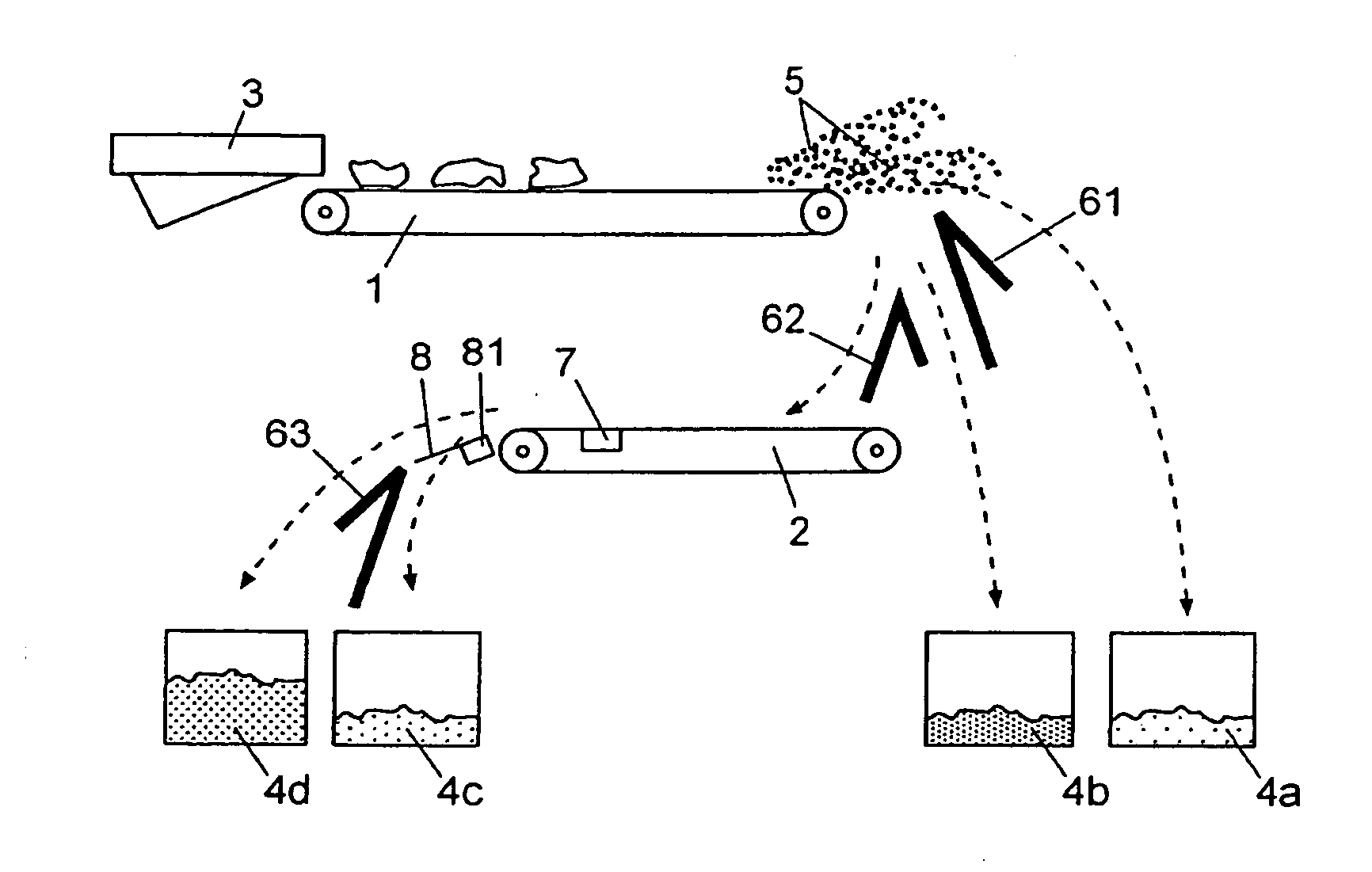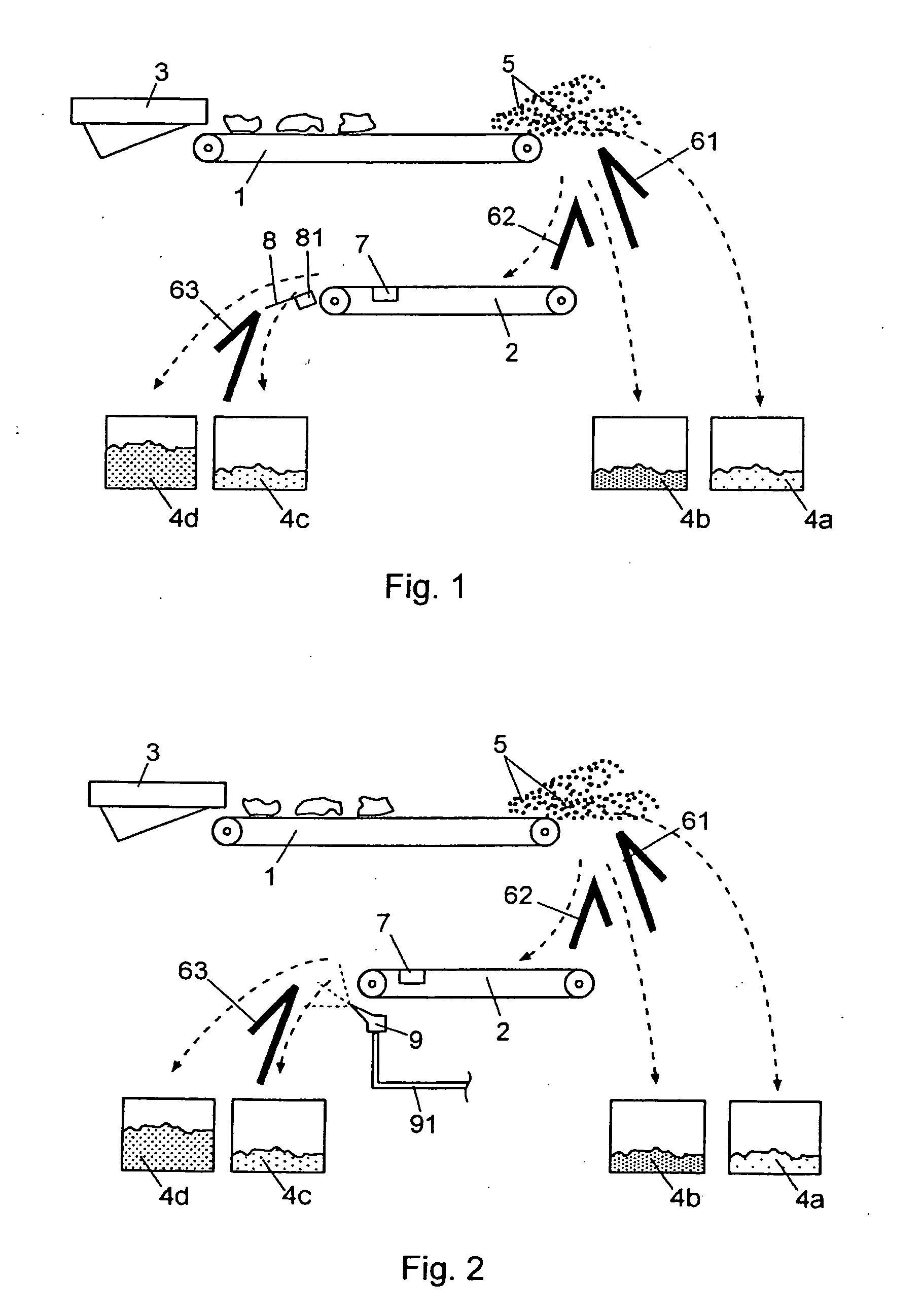Method and unit for the separation of non-ferrous metals and stainless steel in bulk material handling
a non-ferrous metal and stainless steel technology, applied in the direction of magnetic separation, solid separation, wet separation, etc., can solve the problems of inability to detect the exact metal, lack of information on the saving of bits, and time-consuming logic consideration, so as to achieve the effect of reducing the investmen
- Summary
- Abstract
- Description
- Claims
- Application Information
AI Technical Summary
Benefits of technology
Problems solved by technology
Method used
Image
Examples
Embodiment Construction
[0026]As can be observed in the aforementioned figures, the present invention includes two stacked conveyor belts (1, 2), with a vibrating feeder (3) placed at the entrance of the first conveyor belt (1). Said feeder (3) feeds the ferrous metal, non-ferrous metal and non-metal portions (4a, 4b, 4c, 4d) of the materials to be classified. The first conveyor belt (1) includes near the extreme part of its exit a generation of eddy currents (5) to make certain non-ferrous conductor metal portions (4a, 4b) jump, to end up on two consecutive sorting trays (61, 62) to create two exits of non-ferrous metal portions (4a, 4b), including a first exit of the non-ferrous metal portions (4a) of those materials that are more susceptible to jump far, such as aluminium, and a second sorting tray (62) of non-ferrous metal portions (4b) of other jumping metals. The ferrous metal and non-metal portions (4c, 4d) that are not affected by the eddy currents (5) fall between the first conveyor belt (1) and t...
PUM
 Login to View More
Login to View More Abstract
Description
Claims
Application Information
 Login to View More
Login to View More - R&D
- Intellectual Property
- Life Sciences
- Materials
- Tech Scout
- Unparalleled Data Quality
- Higher Quality Content
- 60% Fewer Hallucinations
Browse by: Latest US Patents, China's latest patents, Technical Efficacy Thesaurus, Application Domain, Technology Topic, Popular Technical Reports.
© 2025 PatSnap. All rights reserved.Legal|Privacy policy|Modern Slavery Act Transparency Statement|Sitemap|About US| Contact US: help@patsnap.com


